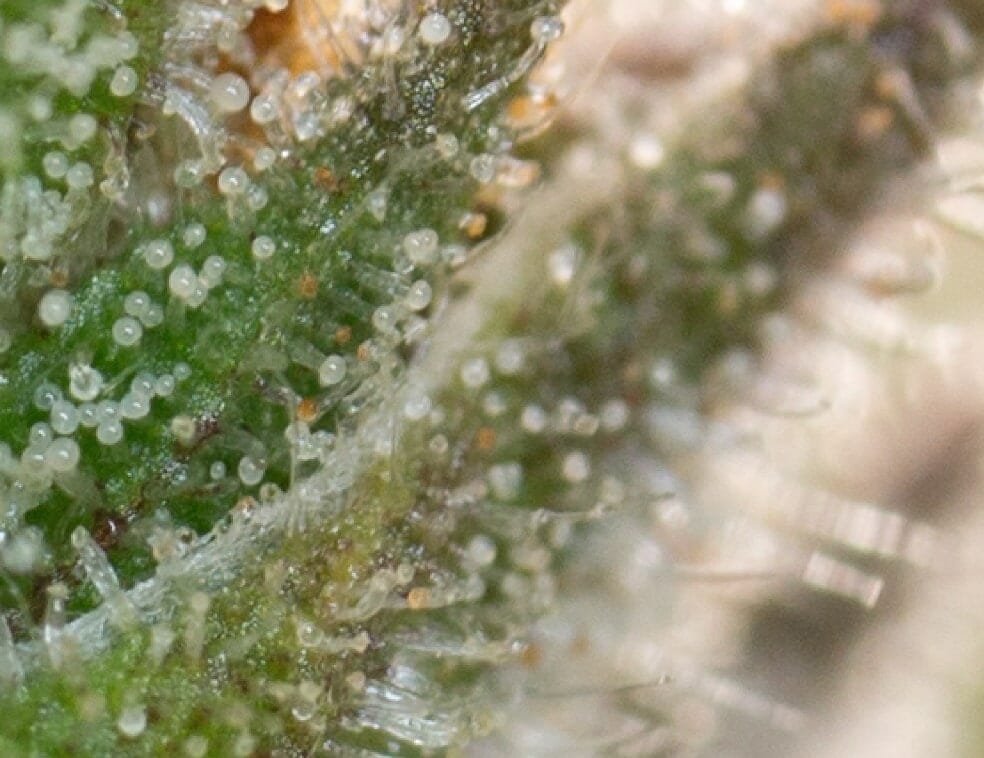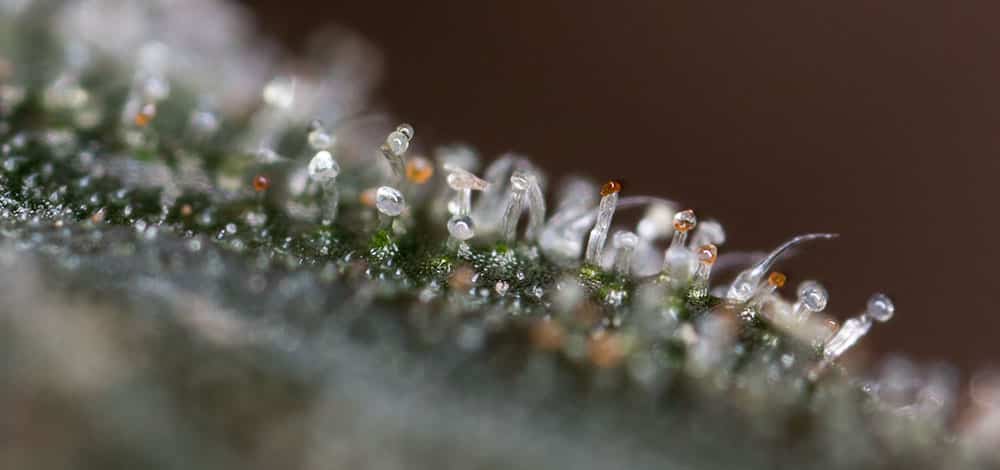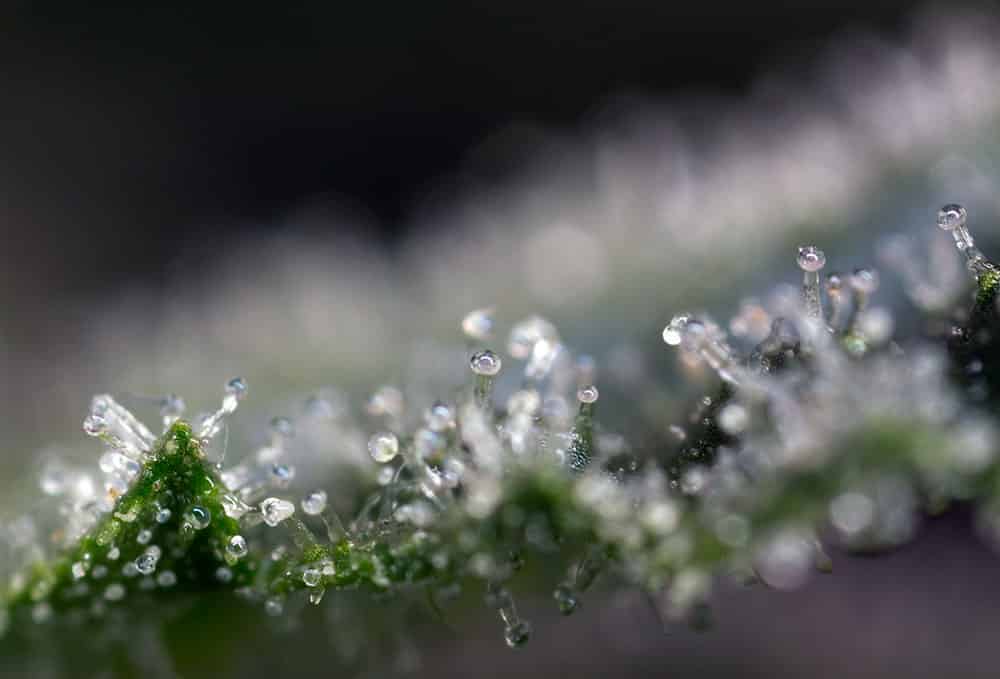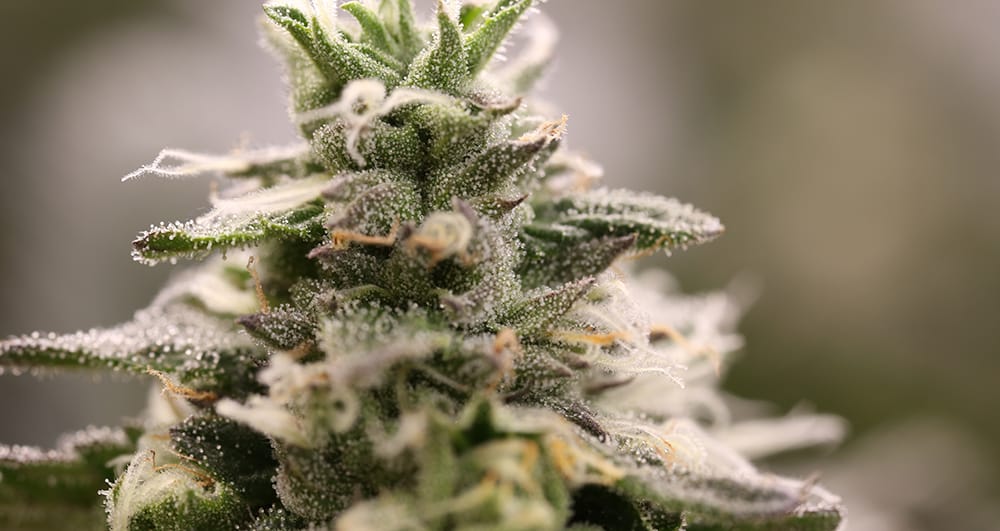22 Apr Expert Identifies Early CBN Production under Fluence Lights

Fluence consultant Ryley Leech saw early CBN formation on a number of strains,
including Super Silver Haze.
Last week, we posted an analysis of trichome formation by Fluence consultant Ryley Leech at a commercial cannabis facility deploying SPYDRx PLUS systems.
Colorado-based Leech has spent many years studying medicinal cannabis, always toting his camera to create the stunning images that help him with his research.

The lineage of Dr. Who opens itself to a few different cannabinoids such as CBG and CBC.
In those same studies of the California plants, Leech observed extremely early production of cannabinol (CBN), compared to what he’s used to seeing. He says he also saw CBN in cannabis genetics where he normally wouldn’t expect to see CBN.
“I definitely saw the CBN earlier than I would have expected,” says Leech, who has been cultivating and growing cannabis for 10 years.
It’s the first time I saw CBN forming at the site of trichome formation.”
Having conducted more than a decade of research under legacy lighting systems such as HPS, metal halide and even early LED systems, Leech was particularly interested in the opportunity to study the effects of the new Fluence LED grow lights emitting a broad spectrum particularly well-suited to cannabis cultivation. The California plants were growing under Fluence SPYDRx PLUS grow lights.
So why is Leech so interested in CBN? Known to have a sedative effect, CBN is a weak psychoactive chemical compound found in cannabis indica and cannabis sativa. From a medicinal standpoint, benefits of CBN include pain relief, antibacterial and anti-convulsive properties, and bone-cell-growth promotion. It is also an anti-inflammatory and an appetite stimulant.
“I saw early CBN formation and I saw it on the veinlet areas between the ridges of the leaf. This is slightly outside where you expect to see it,” Leech says. “That’s an interesting developmental aspect. Increased light intensity may play into that.”

Most of the “orange” trichomes Leech saw on Super Silver Haze were located on the veinlets of the flower’s leaves, rather then the flower itself.
And while, generally, cannabis growers view the appearance of CBN — signaled by the appearance of orange-red anthocyanin — as a sign the plant is near harvest, Leech is fairly certain this was not the case on the plants he observed under the Fluence LED grow lights at day 47 of their flower cycle.
“Typically you’re not looking for CBN because it’s a sign of THC degradation,” says Leech. And while more studies will have to be done, he suspects that the Fluence LED lights are giving plants a light more true to what their ancestors received from the sun, before they were hybridized to grow under HPS lights, and so the plants are reverting to a more natural growth pattern. Leech strongly suspects that the appearance of CBN in this environment is not a sign of THC breakdown. “Even though I was seeing CBN, along with increased anthocyanin production, other markers told me the plant wasn’t done.”

On J1 genetics, Leech observed “strong capitate-stalked trichomes and uniformity.”
Growers may be required to rethink their markers for harvest time when growing under Fluence systems as the appearance of orange trichomes may no longer be an indication that it’s time to pull the plants.
I do believe the plants I saw will finish earlier than their usual expected cycle time, but I’m not sure we can look to orange trichomes as a signal to harvest,” Leech says.
“Growers need to have a whole-plant awareness. Before making the call to harvest, they should dig deep and look at trichomes that you would identify as a THC-based trichomes,” he adds.
“This peculiarity is going to require considerably more research,” he says.
And Leech, who’s happiest peering through his camera’s viewfinder at an intricately beautiful cannabis flower, is sure to be at the forefront of that research.

Other than THC, Blackberry Kush is known for low levels of CBD.


